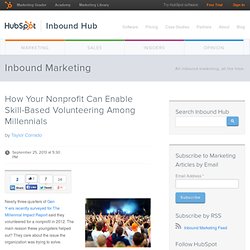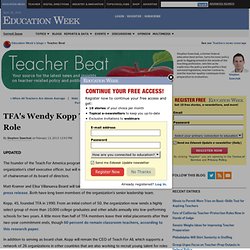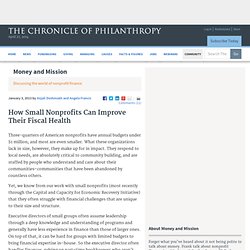

Welcome to Inc.com. Welcome to Inc.com. How Your Nonprofit Can Enable Skill-Based Volunteering Among Millennials. Nearly three-quarters of Gen Y-ers recently surveyed for The Millennial Impact Report said they volunteered for a nonprofit in 2012.

The main reason these youngsters helped out? They care about the issue the organization was trying to solve. There are plenty of other reasons Millennials get involved as well, according to the survey. They feel they could make an impact for a cause they care about. They want to connect and network with like-minded people. While the chance to get a free T-shirt or other prize made the list of reasons too, Millennials showed that what they really want out of the experience is not merchandise, but intangible experience. This really draws upon the shift from place-based volunteering to skill-based volunteering -- something a lot of organizations and companies are incorporating into their culture more and more. Place-Based vs. And by all means, it is still an amazing way to include individuals who are not able to give financially in your organization’s work.
How to Recruit a Fundraising Board. One of the biggest woes of a nonprofit leader, aside from the endless fundraising circuit, is an ineffective board, particularly when it comes to fundraising.

But you cannot just recruit a bunch of warm bodies to your board and then assume that they will magically bring money in the door. If you want your board to effectively contribute to the financial engine, you have to start from the beginning. And that is to recruit a money-raising board. In order to assemble an army of volunteer money raisers, advocates, ambassadors for your nonprofit, you have to get strategic. You must move away from scarcity-based board recruitment where you beg people to fill vacant holes on your board and instead create a recruitment strategy that identifies the right people with the right skills, experience and networks who will become your partners in bringing more money in the door. And that strategy looks like this: Don't think in broad terms like "fundraising" or "marketing. " Duke Haddad - Volunteers: I Signed Up to Do What?
By F.

Duke Haddad | Posted on April 05, 2013 If you asked your staff members if they could handle multiple tasks at once, many would say no. What they might say is that they need volunteers to assist them with their jobs. Better yet, they need volunteer board members because board members have a higher degree of loyalty, engagement and accountability to the organizations they serve. Sadly for many volunteer board members, they are unintentionally caught up in a shell game. For the majority of volunteers, this action is embedded in the culture and history of each organization.
I have worked with many boards and volunteers in my career. The key with volunteer board members is to have: As a consultant, I was asked to make recommendations regarding several board members' poor performances with one particular organization. 9 Keys to Energizing Your Board Meetings. Great board meetings create a climate for engaged decision-making that allows you to keep and attract top-notch board members.

A few years ago I sat in on an organization's board meeting before being asked to join the board. The meeting was so chaotic I wanted to flee. TFA's Wendy Kopp Transitions Into Board Role - Teacher Beat. The founder of the Teach For America program, Wendy Kopp, will step down as the organization's chief executive officer, but will remain active in the organization by assuming the role of chairwoman of its board of directors.

Matt Kramer and Elisa Villanueva Beard will take over as co-CEOs, the organization said today in a press release. Both have long been members of the organization's senior leadership team. How Small Nonprofits Can Improve Their Fiscal Health - Money and Mission. Three-quarters of American nonprofits have annual budgets under $1 million, and most are even smaller.

What these organizations lack in size, however, they make up for in impact. They respond to local needs, are absolutely critical to community building, and are staffed by people who understand and care about their communities–communities that have been abandoned by countless others. Yet, we know from our work with small nonprofits (most recently through the Capital and Capacity for Economic Recovery Initiative) that they often struggle with financial challenges that are unique to their size and structure.
Executive directors of small groups often assume leadership through a deep knowledge and understanding of programs and generally have less experience in finance than those of larger ones. On top of that, it can be hard for groups with limited budgets to bring financial expertise in-house. Running lean also means that small nonprofits rarely have a surplus. Grant makers can help: Wanted: Strong Capable Non-Profit Boards.